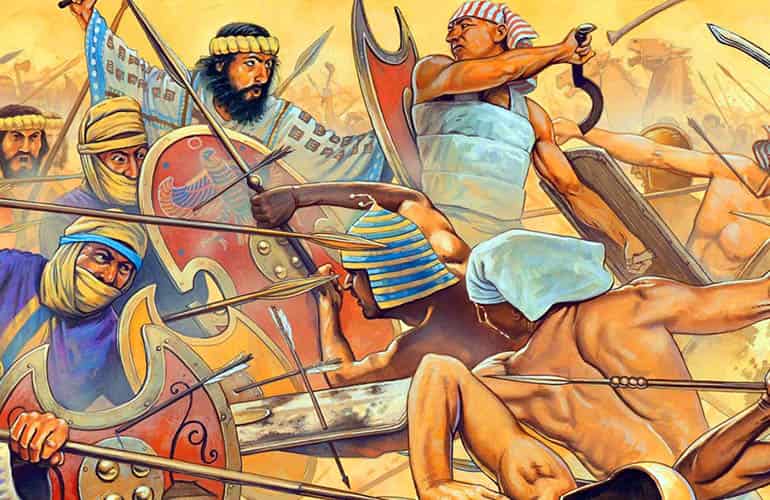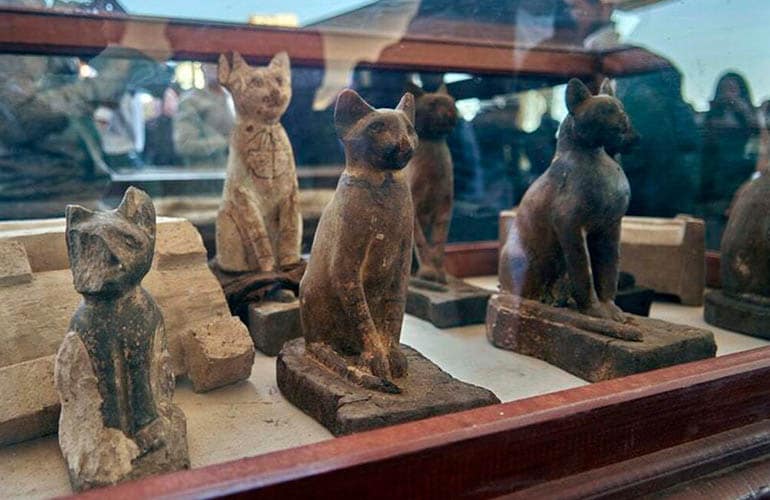The Battle of Pelusium ” Cats “:
Battle of Pelusium: Pelusium was an ancient city of Lower Egypt, located in the Nile Delta, in the easternmost mouth of the Nile called Pelusium mouth, known as Ostium Pelusiacum, although that name was derived from the Greek and was given later by the classical authors; its Egyptian name was Per-Amon.
Did the Persians use cats as shields?
Pelusium was the first major battle between the Achaemenid Empire and ancient Egypt. This decisive battle transferred the throne from the pharaohs to Cambyses II of Persia. It was fought near Pelusium, an important city at the eastern end of the Nile Delta, 30 kilometers southeast of modern Egypt’s Port Said, in 525 BC. The battle was won through a very unusual strategy in the part of Cambyses II, the use of animals as hostages and, above all, cats.

What does the cat mean in Egyptian?
Cats were a popular pet in ancient Egypt and were closely associated with the goddess Bastet (also known as Bast) who appears in Egyptian art with the body of a woman and the head of a cat. She was the goddess of the house, domesticity, women’s secrets, cats, fertility, and childbirth.
This value is visible everywhere through her culture from art to Egyptian religion but the battle of Pelusium is an example of how far her veneration went. This battle was the decisive clash between Pharaoh Psametik III and the Persian King Cambyses II, resulting in the first Persian conquest of Egypt.
This decisive – and very singular – battle dates back to approximately 525 B.C. when after the death of the Egyptian pharaoh Amasis II his son Psamtik III ascended to power.
There were many factors that really intervened in the defeat that the Egyptians obtained in this battle, Psamtik III was very young, inexperienced and had to make the maximum effort to protect his kingdom against the Persian threat that was increasing, which was led by King Cambyses II
It was obvious that the young and inexperienced Egyptian pharaoh could not be compared to a figure of the magnitude of Cambyses II, who was also heir to Cyrus the Great and as willing as he was to expand his domains of territory. Egypt was already the only state that remained independent in the whole area, so its conquest was a matter of time.
The Persian army took the step and crossed the entire Sinai Peninsula with the logistical help of the local indigenous tribes. The only Psametic possibility was to get help from the Greek cities with whom he had good commercial relations but it turned out that these left him behind and joined Cambyses with their respective fleets, so the fate of Egypt was already in sight.
The pharaoh managed to gather a small army to face the Persians, but all attempts at victory were now almost impossible. Finally, the two armies met at Pelusius in the Nile Delta.

Who won the battle of Pelusium?
It was at this point that Cambyses came up with a great genius, which would lead him straight to victory. He knew perfectly the customs, the gods and the culture of the Egyptians and knew how to use them to his advantage. The Persian king ordered his warriors to paint on each of their shields the image of Bastet, the Egyptian goddess who protected the home and was also associated with the cats, the most sacred animal of ancient Egypt. The Egyptians on seeing this were certainly stunned and undecided, they did not know what to do since they did not want to offend the image of their goddess. Then the Persian attack was unleashed which caused a terrible massacre.
The few survivors ran to hide in the nearby fortress of Pelusium. Cambyses II did not want to face a long, tedious and painful siege, so he had to defeat the entrenched and had to do it as soon as possible.
The Persian king gave another demonstration of his genius and ordered his men to capture as many cats as possible. He then began to throw them into the fortress.
This was “the last straw”, and the panic among the Egyptians began to increase, fearful of hurting one of the sacred animals. The archers didn’t dare shoot their enemies. The moral impact was brutal, so the Egyptians surrendered and the fortress fell directly into the hands of Cambyses II.






